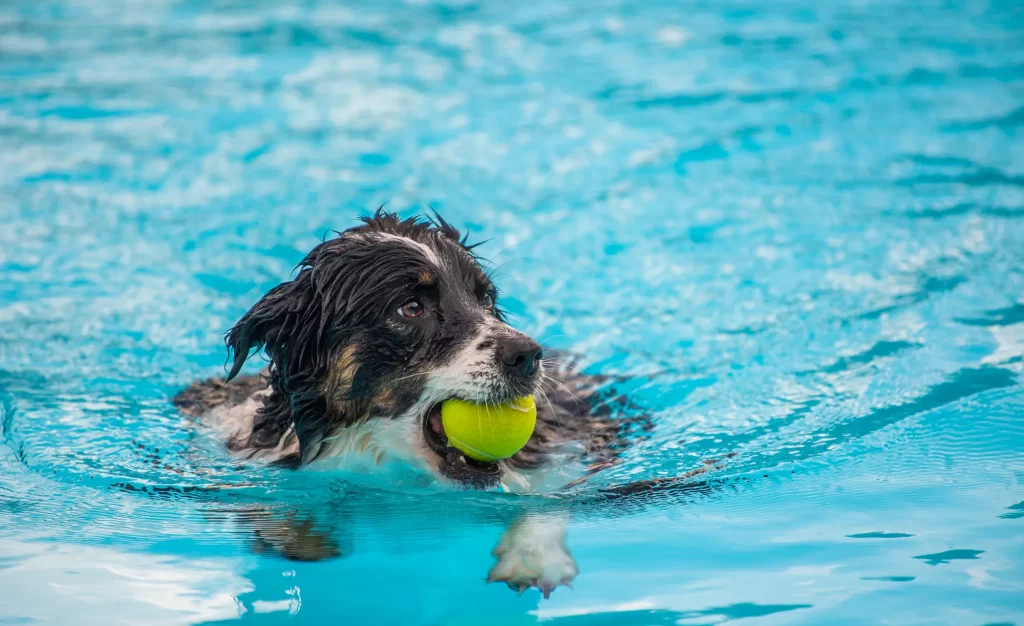Swimming is a great activity for dogs, as it provides a great workout while also being a fun and refreshing way to cool off during the summer months. However, not all dogs are natural swimmers, and some may need to be trained to feel comfortable in the water.

Here are some tips for training your dog to swim:
Start Slowly – The key to teaching your dog to swim is to take things slowly and gradually build up their confidence and skills. Start by introducing your dog to shallow water, such as a kiddie pool or a shallow area of a lake or river. Allow your dog to explore the water on their own terms, and be patient if they are hesitant or unsure.
Use a Life Jacket – Even if your dog is a strong swimmer, it’s a good idea to use a life jacket to keep them safe while they are learning to swim. Choose a life jacket that fits your dog comfortably and securely, and make sure to adjust it properly before getting in the water.
Offer Plenty of Encouragement – When your dog is in the water, offer plenty of encouragement and positive reinforcement. Use treats and praise to reward your dog for being brave and for making progress, and be patient if they struggle at first.
Use a Toy or Treat to Encourage Swimming – One way to encourage your dog to swim is to use a toy or treat as a reward. Toss a ball or toy into the water and encourage your dog to retrieve it, or offer a treat as a reward for swimming a short distance. Over time, you can gradually increase the distance and difficulty of the swim, building up your dog’s swimming skills and confidence.

Teach Basic Commands – It’s important to teach basic commands to your dog before they start swimming. Commands like “come” and “stay” can be useful for keeping your dog safe while they are in the water. Make sure your dog understands these commands before getting in the water, and be sure to use them consistently.
Stay Close and Monitor Your Dog – When your dog is swimming, it’s important to stay close and monitor them at all times. Dogs can tire quickly in the water, so be sure to keep an eye on your dog’s energy levels and make sure they don’t overexert themselves. If your dog seems tired or is struggling, bring them back to shore and give them a break.
Make Swimming a Positive Experience – Finally, make sure to make swimming a positive experience for your dog. Dogs are more likely to enjoy and feel comfortable in the water if they associate it with positive experiences like playtime and treats. Make sure your dog is having fun while they are swimming, and don’t push them too hard if they are not ready.

In conclusion, training your dog to swim can be a fun and rewarding experience for both you and your pet. By taking things slowly, using positive reinforcement, and staying close and monitoring your dog at all times, you can help your dog build confidence and skills in the water, and enjoy many happy and healthy swimming sessions together.

